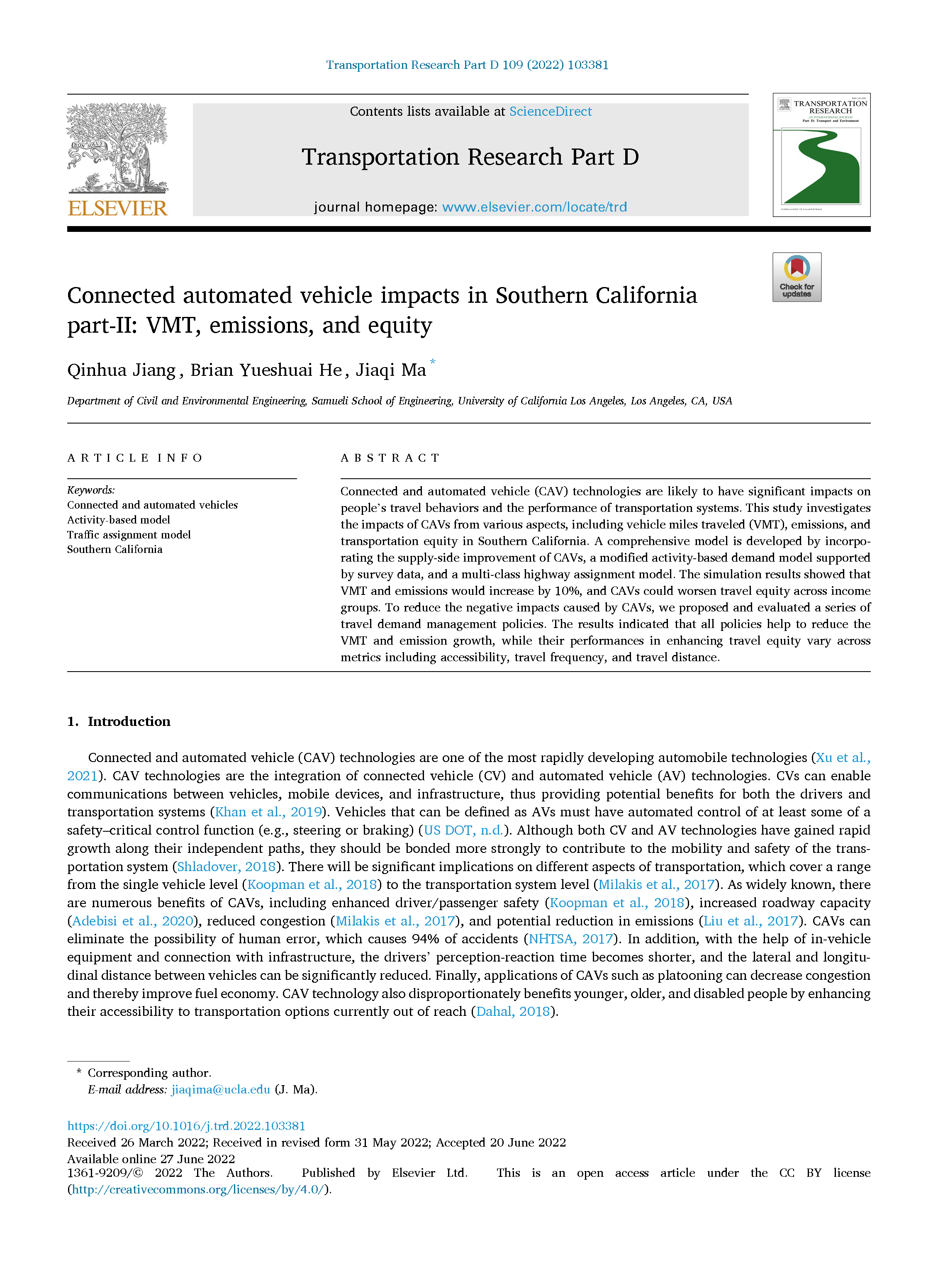Date: August 1, 2022
Author(s): Qinhua Jiang, Yueshuai He, Jiaqi Ma
Abstract
Connected and automated vehicle (CAV) technologies are likely to have significant impacts on people’s travel behaviors and the performance of transportation systems. This study investigates the impacts of CAVs from various aspects, including vehicle miles traveled (VMT), emissions, and transportation equity in Southern California. A comprehensive model is developed by incorporating the supply-side improvement of CAVs, a modified activity-based demand model supported by survey data, and a multi-class highway assignment model. The simulation results showed that VMT and emissions would increase by 10%, and CAVs could worsen travel equity across income groups. To reduce the negative impacts caused by CAVs, we proposed and evaluated a series of travel demand management policies. The results indicated that all policies help to reduce the VMT and emission growth, while their performances in enhancing travel equity vary across metrics including accessibility, travel frequency, and travel distance.
About the Project
Transportation agencies use travel demand models (e.g., four-step models, activity-based models, dynamic traffic assignment models) to evaluate transportation improvement projects. However, existing travel demand models are unable to account for capacity changes of the network and mode shifts associated with connected and automated vehicle (CAV) technologies and services. This project aims to lay a foundational framework for the development of planning-level analysis capability that includes CAVs and engage in a small scale case study, toward a vision where practitioners have CAV-aware tools available. The research team will work with stakeholders in the Southern California Association of Governments (SCAG) to identify current needs in modeling CAVs and new mobility services in demand models. The project will develop methodologies to enhance the existing SCAG activity-based demand model, and the areas of enhancements include, but not limited to, capacity adjustments and new scenarios of travel behavior/choice modeling.


